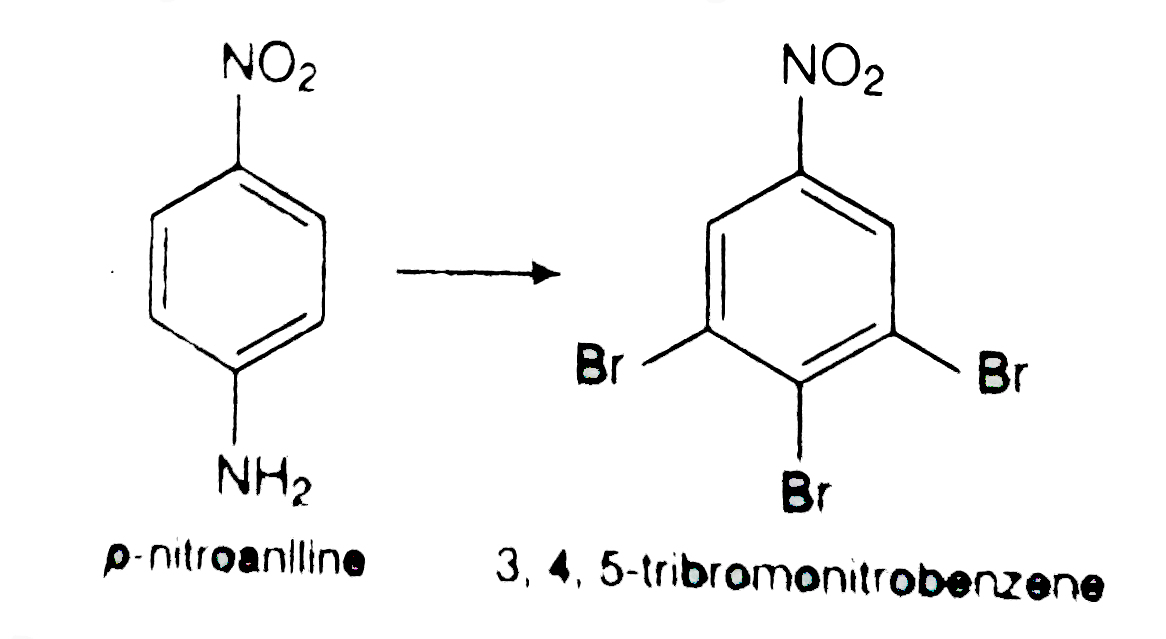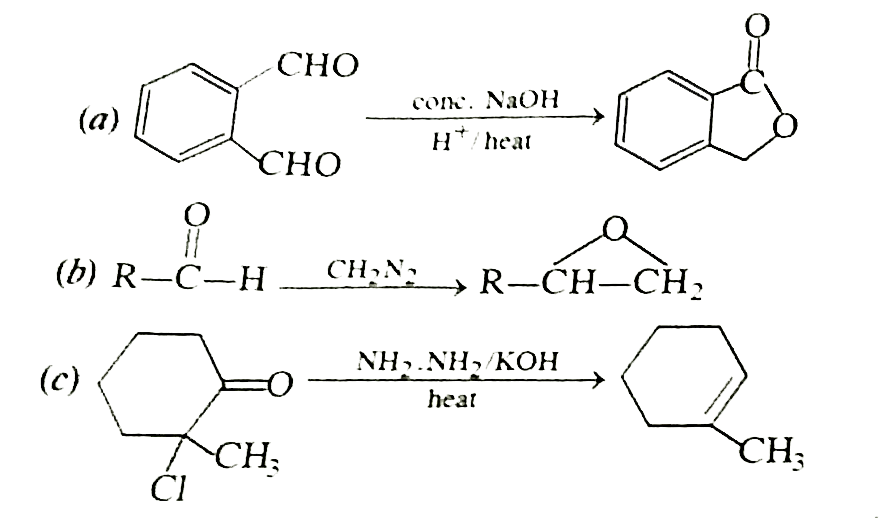How will you bring about the following conversions in not more than two steps?
propanone to propene
To convert propanone (CH3C(=O)CH3) to propene (CH3CH=CH2) in not more than two steps, we can follow these steps:
Step 1: Reduction of Propanone to Propanol
- Reaction: Propanone is reduced to propanol (CH3CH(OH)CH3) using nickel (Ni) as a catalyst in the presence of hydrogen gas (H2).
- Equation:
CH3C(=O)CH3+H2Ni−→CH3CH(OH)CH3
- Explanation: The carbonyl group (C=O) in propanone is reduced to a hydroxyl group (–OH) in propanol.
Step 2: Dehydration of Propanol to Propene
- Reaction: Propanol is then dehydrated to form propene (CH3CH=CH2) by heating it with alumina (Al2O3).
- Equation:
CH3CH(OH)CH3Al2O3,heat−−−−−−→CH3CH=CH2+H2O
- Explanation: The hydroxyl group is removed along with a hydrogen atom from the adjacent carbon, resulting in the formation of a double bond, yielding propene.
Final Reaction Summary:
1. Reduction: Propanone → Propanol
2. Dehydration: Propanol → Propene
- Reaction: Propanone is reduced to propanol (CH3CH(OH)CH3) using nickel (Ni) as a catalyst in the presence of hydrogen gas (H2).
- Equation:
CH3C(=O)CH3+H2Ni−→CH3CH(OH)CH3
- Explanation: The carbonyl group (C=O) in propanone is reduced to a hydroxyl group (–OH) in propanol.
- Reaction: Propanol is then dehydrated to form propene (CH3CH=CH2) by heating it with alumina (Al2O3).
- Equation:
CH3CH(OH)CH3Al2O3,heat−−−−−−→CH3CH=CH2+H2O
- Explanation: The hydroxyl group is removed along with a hydrogen atom from the adjacent carbon, resulting in the formation of a double bond, yielding propene.
1. Reduction: Propanone → Propanol
2. Dehydration: Propanol → Propene
Topper's Solved these Questions
- BOOK - ICSECHAPTER - ALDEHYDES, KETONES AND CARBOXYLIC ACIDSEXERCISE - ISC EXAMINATION QUESTIONS (PART-II DESCRIPTIVE QUESTIONS) (CARBOXYLIC ACIDS)99videos
ALDEHYDES, KETONES AND CARBOXYLIC ACIDS
- BOOK - ICSECHAPTER - ALCOHOLS, PHENOLS AND ETHERS EXERCISE - ISC EXAMINATION QUESTIONS25videos
ALCOHOLS, PHENOLS AND ETHERS
- BOOK - ICSECHAPTER - APPENDIX II ( TYPICAL CONVERSIONS)EXERCISE - AROMATIC CONVERSIONS98videos
APPENDIX II ( TYPICAL CONVERSIONS)
Similar Questions
How will you bring out the following conversion?
 View Solution
View SolutionHow will you bring about the following conversions in not more than two steps?
Propanal to butanoneView SolutionHow will you bring about the following conversions in not more than two steps?
Propanal to butanoneView SolutionHow will you bring about the following conversions in not more than two steps?
Propanal to butanoneView Solution(i) Write structure of the product(s) formed :
(a) CH3−CH2COOHCl2,red phosphorus−−−−−−−−−−−→
(b) C6H5COClH2,Pd−BaSO4−−−−−−−−−→
(c) 2HCHOConc.KOH−−−−−−→
(ii) How will you bring the following conversions in not more than two steps:
(a) Propanone to propene.
(b) Benzyl chloride to phenyl ethanoic acid.View SolutionHow will you bring about the following conversions in not more than two steps?
Bromobenzene to 1-phenylethanolView SolutionHow will you bring about the following conversions in not more than two steps?
Bromobenzene to 1-phenylethanolView SolutionHow will you bring about the following conversions in not more than two steps?
Bromobenzene to 1-phenylethanolView SolutionHow will you bring about the following changes :
 View Solution
View SolutionHow will you bring about the following conversations in not more than two steps?
a. Propene to 1− Nitropropane
b. Bromocethane to cis-hex −3− eneView Solution

